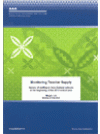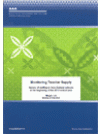The 2012 Monitoring Teacher Supply report provides the Ministry with a snapshot of the number of entitlement staffing vacancies and re-advertised vacancies in schools at the start of Term 1, how these vacancies are being covered and, in the case of secondary schools, in what subject areas pressure points are occurring.
Key Results
The annual Survey of Staffing provides the Ministry of Education with a snapshot of the number of entitlement staffing vacancies at the start of Term 1. The survey also collects information about the number of overseas-trained and beginning teachers employed by schools. In 2012, the survey was completed by 94% of all state and state-integrated schools.
There were 184.7 Full-Time Teacher Equivalent (FTTE) vacancies in state and state-integrated schools at the start of the 2012 school year. These vacancies represented 0.4% of all FTTE entitlement positions in state and state-integrated schools. Vacancies were slightly lower than last year (0.5% in 2011) and equivalent to that recorded in 2010 (0.4%). In both primary and secondary schools, the proportions of vacant FTTE entitlement positions in 2012 (0.4% and 0.5% respectively) were half what they were in 2005 (0.9% and 1.0% respectively).
As a proportion of entitlement positions, vacancies were slightly higher in rural areas, schools with the highest proportion of Māori students on their roll (relative to other schools) and low decile schools (deciles 1-3).
In primary schools, there were 11.2 FTTE vacancies for Māori medium/bilingual teachers. These vacancies represented 0.4% of all FTTE entitlement positions in schools that offer Māori medium education (slightly higher than 0.2% in 2011 but the same as 0.4% in 2010).
Vacancies in secondary schools were most likely to be for mathematics and statistics (19.1% of vacancies), followed by vacancies in science subjects (14.8%) and vacancies for Māori language teachers (Te Reo Māori and Māori medium/bilingual; 12.9%). Vacancies in technology subjects decreased from 10.5% in 2011 to 5.2% in 2012.
In 2012, 31% of vacancies in primary schools and 36% of vacancies in secondary schools at the beginning of Term 1 had been re-advertised. Re-advertised vacancies represented just 0.1% of all FTTE entitlement positions in primary schools and 0.2% of entitlement positions in secondary schools. The proportion of re-advertised vacancies in primary and secondary schools in 2012 were less than half what they were in 2005.
Over the past three years, there has been an increase in the number of New Zealand trained teachers applying for permanent positions in primary schools. In secondary schools, the number of New Zealand-trained applicants for English and health & physical education positions increased over the last three years. The number of applicants for Te Reo Māori positions has also increased. In comparison, the number of New Zealand-trained applicants for maths and statistics and technology positions has stayed stable. These figures may suggest that teacher supply for primary, English, Te Reo Māori and health & physical education positions has increased over the last three years, while supply for maths and statistics and technology positions has remained stable.
The number of overseas-trained teachers and beginning teachers being employed by schools has decreased over the past five years. In 2012, new overseas-trained teachers represented 0.4% of teachers in primary schools (compared with 1.0% in 2008) and 0.8% of teachers in secondary schools (1.8% in 2008). First year beginning teachers represented 3.8% of teachers in primary schools (compared with 5.0% in 2008) and 3.3% of teachers in secondary schools (4% in 2008).
An additional question asked principals how easy or difficult it is to find relief teachers for positions that require proficiency in Te Reo Māori. Two-thirds (67%) of all principals reported finding it very difficult, and just over one quarter of principals (27% from primary and 28% from secondary schools) reported finding it somewhat difficult to source relief teachers for these positions.


